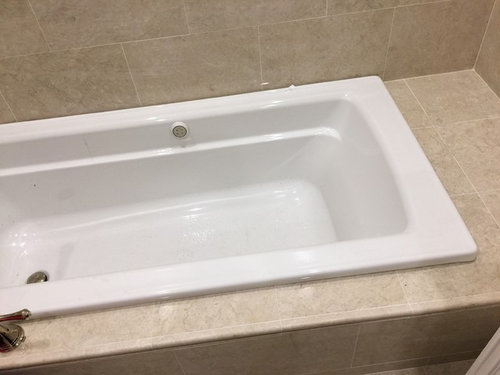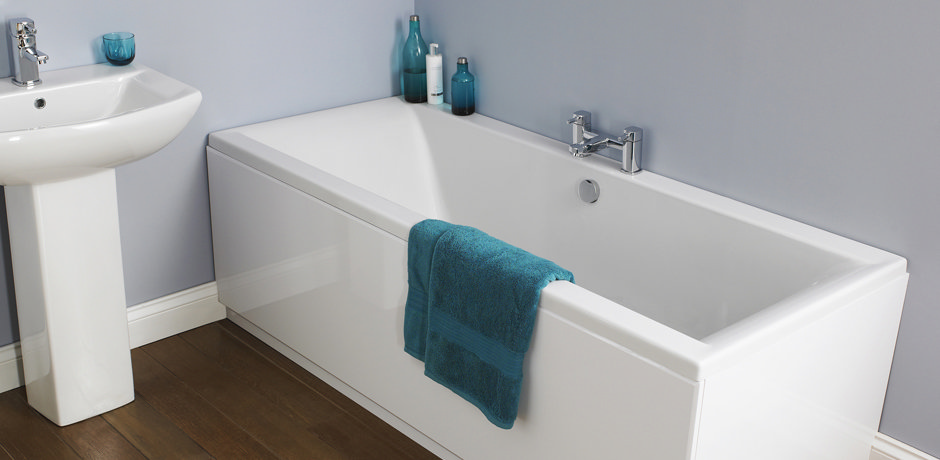The Foundation of Plumbing Knowledge When Installing a Bathtub
The Foundation of Plumbing Knowledge When Installing a Bathtub
Blog Article
We have unearthed this article pertaining to How to Install a Bathtub below on the internet and thought it made good sense to write about it with you in this article.

Installing a bathtub isn't precisely rocket science, but it does require strong plumbing, woodworking, as well as in some cases, tiling skills. Changing an old bath tub with a new one is additionally a reasonably challenging project. If the old tub is readily obtainable, the project can move easily; if you have to open a wall to eliminate the old tub and position the new bathtub, the task is much harder. In either instance, the project is within a house handyman's abilities, although you will need a helper to leave the old bathtub and set in the brand-new one. Make sure you have actually qualified yourself for the work as well as are comfortable attempting it. As opposed to hiring a specialist to take control of a halfway-completed job, it is better to take into consideration employing one prior to you start. Chances are you may require an expert plumber to make tube links.
This post will certainly aid you mount a brand-new bath tub in your bathroom if you have already purchased a new bathtub and also don't require to change the setup of your previous water system pipes.
Your tools and also material list must comprise the following:
Removing Old Touches
If you need to replace old taps with new ones as a part of your installment, after that the first thing you need to do is disconnect the supply of water. After doing so, switch on the taps to drain pipes any type of water continuing to be in the system. The procedure of eliminating the existing taps can be rather problematic due to the limited gain access to that is usually the case.
Utilize a basin wrench (crowsfoot spanner) or a tap device to undo the nut that attaches the supply pipelines to the taps. Have a cloth all set for the staying water that will certainly come from the pipelines. When the supply pipes have actually been removed, make use of the very same device to loosen up the nut that holds the faucets onto the bath/basin. You will certainly require to quit the solitary faucets from transforming throughout this procedure. Once the faucets have been removed, the holes in the bath/basin will have to be cleansed of any kind of old sealing substance.
Prior to moving on to fit the brand-new taps, compare the pipe links on the old faucets to the new faucets. If the old taps are longer than the new faucets, then a shank adapter is required for the brand-new taps to fit.
Suitable New Touches
If the tails of the brand-new faucets are plastic, then you will need a plastic port to stop damages to the thread. One end of the connector fits on the plastic tail of the faucet and the various other end gives a link to the existent supply pipelines.
If you need to fit a monobloc, after that you will call for lowering couplers, which attaches the 10mm pipeline of the monobloc to the conventional 15mm supply pipeline.
Next, place the tap in the installing opening in the bath/basin ensuring that the washing machines remain in location between the faucet as well as the sink. Secure the tap in position with the maker provided backnut. When the tap is securely in position, the supply pipes can be attached to the tails of the faucets. The taps can either be connected by using corrugated copper piping or with regular tap ports. The previous type should be linked to the tap ends first, tightening up just by hand. The supply pipelines can later be linked to the other end. Tighten both ends with a spanner after both ends have actually been connected.
Setting up the Bathtub
Utilizing both wooden boards under its feet, put the bathtub in the required position. The wooden boards are valuable in uniformly spreading the weight of the bath tub over the area of the boards as opposed to concentrating all the weight onto four small points.
The next objective is to make certain that the bathtub is leveled all round. This can be accomplished by checking the level as well as changing the feet on the bathtub up until the spirit level reads degree.
To mount faucets, fit the bottom of the outermost flexible tap port to the ideal supply pipe by making a compression join; after that do the same for the other tap.
Activate the water supply and inspect all joints as well as new pipework for leakages and tighten them if necessary. Fill the tub as well as additionally check the overflow outlet and also the regular outlet for leaks.
Lastly, take care of the bathroom paneling as defined in the maker's instruction manual. Tiling as well as sealing around the bathtub should wait up until the bathtub has been used at least once as this will resolve it right into its last setting.
Planning for the Installment
Firstly, the sustaining structure provided with the bath needs to be fitted (if required) according to the manufacturer's instructions. Next, fit the taps or mixer to the bathtub. When fitting the faucet block, it is essential to see to it that if the tap includes a plastic washing machine, it is fitted in between the bathroom and also the faucets. On a plastic bathroom, it is likewise reasonable to fit a supporting plate under the taps device to prevent stress on the bathtub.
Fit the versatile tap connectors to the bottom of both faucets utilizing 2 nuts and olives (often provided with the bathtub). Fit the plug-hole electrical outlet by smearing mastic filler round the sink outlet hole, and then pass the outlet with the hole in the bathroom. Utilize the nut provided by the maker to fit the plug-hole. Examine the plug-hole outlet for an inlet on the side for the overflow pipe.
Next, fit the end of the flexible overflow pipe to the overflow outlet. After that, screw the pipeline to the overflow face which need to be fitted inside the bathroom. Make certain you make use of all of the supplied washers.
Link the catch to the bottom of the waste outlet on the bath tub by winding the thread of the waste electrical outlet with silicone mastic or PTFE tape, and also screw on the trap to the outlet. Connect the bottom of the overflow tube in a comparable manner.The bathroom ought to now prepare to be fitted in its last position.
Tiling Around the Tub
In the location where the bathroom meets the ceramic tile, it is required to secure the joins with a silicone rubber caulking. This is very important as the installation can relocate sufficient to crack a rigid seal, causing the water to penetrate the wall in between the bath and the tiling, resulting in problems with dampness and possible leaks to the ceiling listed below.
You can pick from a range of coloured sealants to assimilate your components and installations. They are sold in tubes and also cartridges, and also are capable of sealing spaces approximately a size of 3mm (1/8 inch). If you have a bigger gap to fill up, you can fill it with twists of soaked paper or soft rope. Remember to constantly fill the bath tub with water before securing, to enable the movement experienced when the bathtub remains in use. The sealer can crack rather early if you do not take into account this movement before securing.
Alternatively, ceramic coving or quadrant tiles can be utilized to border the bathroom or shower tray. Plastic strips of coving, which are easy to use and also reduce to dimension, are also conveniently readily available on the marketplace. It is suggested to fit the ceramic tiles making use of waterproof or water-proof sticky and cement.
Bathtub Installation
How Important Is A Bathtub To Your Home?
High-quality baths, showers, and other bathroom updates are necessary when considering a smart investment in your home. It’s a room that you go to every day and one that is constantly being used by guests.The bathroom is one of the top trafficked rooms in a home and also one of the most valuable in terms of home resale.
Install Piping Before Tub
You will be using your existing drain and waste vent system, but pipes required include the hot and cold water supply lines and a pipe leading to a shower head. A mixing valve and shower head are also needed. Air chambers may be required.
Position the Tub
Lower the tub into place so that the continuous flange fits against the wall studs and rests on 1’x4' or 2’x4' supports. Anchor the tub to the enclosure with nails or screws inserted through the flanges into the studs.
NOTE: Remember, bathtubs and shower stalls may require support framing. A bathtub filled with water is extremely heavy, so check building codes and framing support before installing the tub.
Assemble Drain Connections
Assemble the bathtub drain connections by connecting the tub overflow with the tub drain above the trap, not beyond it. The trap will have a compression fitting that screws over the arm of the overflow assembly.
Place a Pipe For the Shower Head
First, locate a brass female threaded winged fitting and attach it to a framing support via a screw or a nail. Then run a pipe up the wall for the shower head. Sweat or solder the other side of the brass fitting to the top of the pipe.
Attaching Hot and Cold Water Lines
Attach your water lines for both hot and cold by sweating these directly into the hot and cold ports of the mixing valve. The mixing valve will be how water enters the tub’s system, not by the pipes themselves.
Install the Spout
Extend a piece of 1/2 inch pipe, or whichever length is specified in the manufacturer’s instructions, for the tub spout. Sweat on a male threaded fitting at the end of the pipe or use a brass nipple of the proper length and a 1/2 inch cap.
NOTE: At this point you should have your rough-in plumbing work inspected before proceeding further.
Check For Leaks
Restore the water pressure and check the drain connection and the supply pipes for any sign of leaking.
estore the Bathroom Wall
Replace the wall with moisture-resistant drywall as a base for your wall covering. Seal the joints between the wall and your new tub with silicone caulk as protection against water seepage.
https://www.berkeys.com/2016/12/02/bathtub-installation-dallas/

I have been very excited about A Step-by-Step Guide to Installing a Bathtub and I am assuming you appreciated the entire blog posting. Are you aware of another person who is fascinated with the topic? Please feel free to promote it. Thanks a lot for your time. Please stop by our website back soon.
Diverse plumbing issues? We resolve. Report this page